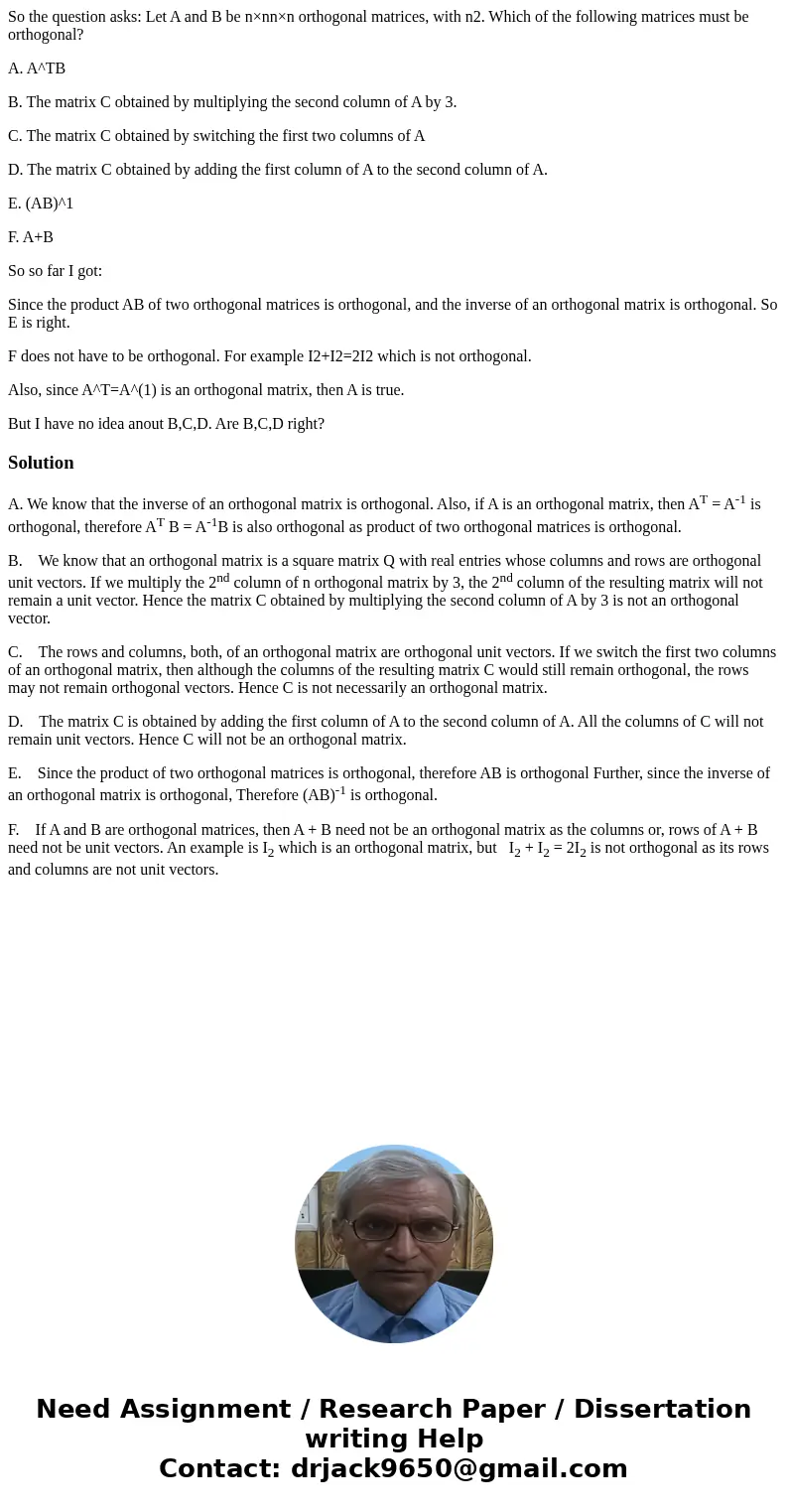So the question asks Let A and B be nnnn orthogonal matrices
So the question asks: Let A and B be n×nn×n orthogonal matrices, with n2. Which of the following matrices must be orthogonal?
A. A^TB
B. The matrix C obtained by multiplying the second column of A by 3.
C. The matrix C obtained by switching the first two columns of A
D. The matrix C obtained by adding the first column of A to the second column of A.
E. (AB)^1
F. A+B
So so far I got:
Since the product AB of two orthogonal matrices is orthogonal, and the inverse of an orthogonal matrix is orthogonal. So E is right.
F does not have to be orthogonal. For example I2+I2=2I2 which is not orthogonal.
Also, since A^T=A^(1) is an orthogonal matrix, then A is true.
But I have no idea anout B,C,D. Are B,C,D right?
Solution
A. We know that the inverse of an orthogonal matrix is orthogonal. Also, if A is an orthogonal matrix, then AT = A-1 is orthogonal, therefore AT B = A-1B is also orthogonal as product of two orthogonal matrices is orthogonal.
B. We know that an orthogonal matrix is a square matrix Q with real entries whose columns and rows are orthogonal unit vectors. If we multiply the 2nd column of n orthogonal matrix by 3, the 2nd column of the resulting matrix will not remain a unit vector. Hence the matrix C obtained by multiplying the second column of A by 3 is not an orthogonal vector.
C. The rows and columns, both, of an orthogonal matrix are orthogonal unit vectors. If we switch the first two columns of an orthogonal matrix, then although the columns of the resulting matrix C would still remain orthogonal, the rows may not remain orthogonal vectors. Hence C is not necessarily an orthogonal matrix.
D. The matrix C is obtained by adding the first column of A to the second column of A. All the columns of C will not remain unit vectors. Hence C will not be an orthogonal matrix.
E. Since the product of two orthogonal matrices is orthogonal, therefore AB is orthogonal Further, since the inverse of an orthogonal matrix is orthogonal, Therefore (AB)-1 is orthogonal.
F. If A and B are orthogonal matrices, then A + B need not be an orthogonal matrix as the columns or, rows of A + B need not be unit vectors. An example is I2 which is an orthogonal matrix, but I2 + I2 = 2I2 is not orthogonal as its rows and columns are not unit vectors.

 Homework Sourse
Homework Sourse